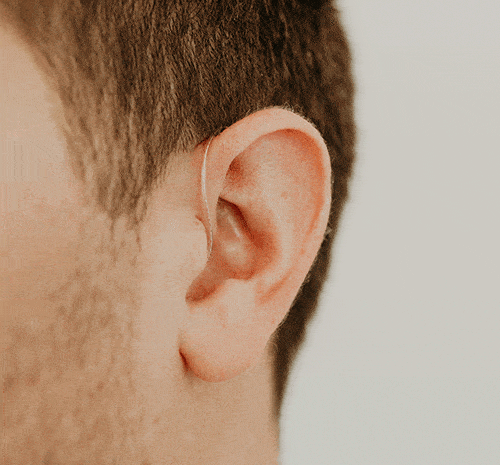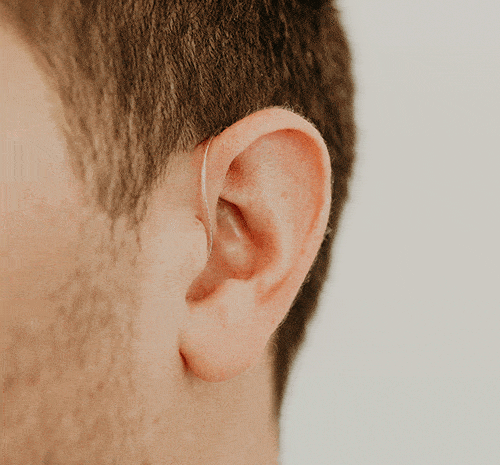
Understanding The Different Types of Hearing Aids
There’s being hard of hearing and then, there’s hearing loss. Depending on your situation, it’s important that you find a hearing device - whether a hearing aid or hearing amplifier - that's right for you. Some devices are designed to make a friend’s voice louder over the din of a packed coffee house, while others
enable a person to hear in any situation.
Types of
hearing aids range from amplifiers to “behind-the-ear” devices to “receiver-in-canal” and to “completely-in-the-canal” technology. But, do you know which hearing aid style is right for your own needs?
Depending on your hearing ability, this product preference will change. So, take a look and see what types of hearing devices work best for you:
Not Quite a Hearing Aid: Amplifiers
Amplifiers are hearing devices that are not medical. These types of hearing aids are not designed for someone who has hearing loss, but rather, for those moments when you’re in a one-on-one setting, nearby others, but you can’t quite understand what your buddy, date, or child is saying. An amplifier can take different forms, from an in-ear device to a small, wireless device you can carry around. If you think you will use it frequently, you might want to consider an in-ear hearing aid style.

Behind-the-Ear (BTE) Hearing Aids
If amplifiers aren't sufficient for your hearing needs, there are "open fit"
behind-the-ear hearing aids.
[caption id="attachment_210295" align="aligncenter" width="300"]

Behind-The-Ear Model[/caption]
These types of hearing devices are designed for moderate to severe hearing loss and are worn completely outside and behind your ear. These popular aids account for about 60% of all hearing aids sold in the U.S. and are what most people think of when they hear the term, “hearing aid.”
Even though they are slightly visible to onlookers, the buyer can choose which flesh-color selection best matches their own skin tone or which color matches their hair for maximum concealment. These aids connect to your ear canal through a tiny, see-through tube.
Receiver-in-Canal (RIC) Hearing Aids
If you’re past “hard of hearing” and are looking for a more effective option, a
receiver-in-canal (RIC) hearing aid may work for you. These types of hearing devices are for those who experience profound hearing loss.
[caption id="attachment_210302" align="aligncenter" width="300"]

Receiver-in-Canal (RIC)[/caption]
And fortunately, they are barely visible. All of the electronics in this aid sit outside the ear in a small case, while the speaker sits inside your ear canal. Its tiny, see-through tube holds a fine wire that connects the two elements.
Completely-in-Canal (CIC) Hearing Aids
The final hearing aid style addressed here is a
Completely-in-Canal (CIC) hearing aid. This device sits entirely inside the ear and is an alternative for those who experience moderate hearing loss.
[caption id="attachment_210297" align="aligncenter" width="300"]

CIC Hearing Aid[/caption]
The nice quality of this hearing aid is that it’s totally hidden within your ear. The Completely-in-Canal devices are custom designed for each individual’s ear canal.
Everyone needs something a little different—whether you want to turn up the volume on a friend’s voice or need to press the “on” button for sound in general. Either way, hopefully, you now know which types of hearing aids will work best for you.
by Becca Cudmore, Updated in 2021

 Behind-The-Ear Model[/caption]
These types of hearing devices are designed for moderate to severe hearing loss and are worn completely outside and behind your ear. These popular aids account for about 60% of all hearing aids sold in the U.S. and are what most people think of when they hear the term, “hearing aid.”
Even though they are slightly visible to onlookers, the buyer can choose which flesh-color selection best matches their own skin tone or which color matches their hair for maximum concealment. These aids connect to your ear canal through a tiny, see-through tube.
Behind-The-Ear Model[/caption]
These types of hearing devices are designed for moderate to severe hearing loss and are worn completely outside and behind your ear. These popular aids account for about 60% of all hearing aids sold in the U.S. and are what most people think of when they hear the term, “hearing aid.”
Even though they are slightly visible to onlookers, the buyer can choose which flesh-color selection best matches their own skin tone or which color matches their hair for maximum concealment. These aids connect to your ear canal through a tiny, see-through tube.
 Receiver-in-Canal (RIC)[/caption]
And fortunately, they are barely visible. All of the electronics in this aid sit outside the ear in a small case, while the speaker sits inside your ear canal. Its tiny, see-through tube holds a fine wire that connects the two elements.
Receiver-in-Canal (RIC)[/caption]
And fortunately, they are barely visible. All of the electronics in this aid sit outside the ear in a small case, while the speaker sits inside your ear canal. Its tiny, see-through tube holds a fine wire that connects the two elements.
 CIC Hearing Aid[/caption]
The nice quality of this hearing aid is that it’s totally hidden within your ear. The Completely-in-Canal devices are custom designed for each individual’s ear canal.
Everyone needs something a little different—whether you want to turn up the volume on a friend’s voice or need to press the “on” button for sound in general. Either way, hopefully, you now know which types of hearing aids will work best for you.
CIC Hearing Aid[/caption]
The nice quality of this hearing aid is that it’s totally hidden within your ear. The Completely-in-Canal devices are custom designed for each individual’s ear canal.
Everyone needs something a little different—whether you want to turn up the volume on a friend’s voice or need to press the “on” button for sound in general. Either way, hopefully, you now know which types of hearing aids will work best for you.





